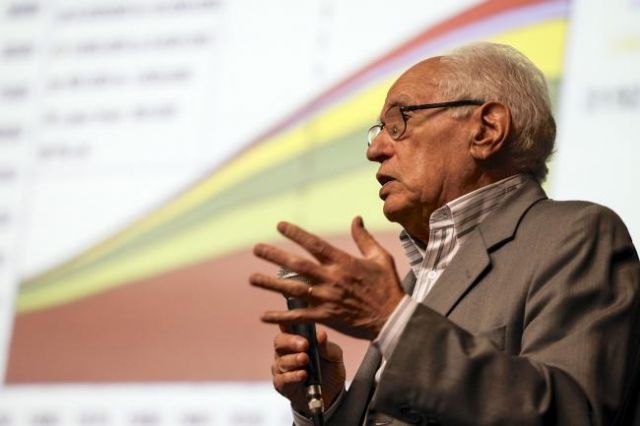
Title
By Wee Kean Fong, Mary Elizabeth Sotos, Rachel Biderman and Charles Kent - June 7, 2013
This article was originally posted on the WRI blog, Insights.
This piece provides insights from a recent Greenhouse Gas Protocol seminar in Brazil. The Seminar was part of WRI’s Sustainable Cities Initiative funded by the Caterpillar Foundation.
Last week in São Paulo, WRI, ICLEI, C40, USP-IEE, and EMBARQ Brazil jointly brought together more than 200 Brazilian city officials and experts to discuss how to use the Global Protocol for Community-Scale Greenhouse Gas Emissions (GPC) to measure and manage greenhouse gas (GHG) emissions from cities. Representatives from Brazil’s federal and state governments, as well as city-level governments including São Paulo, Rio de Janeiro, Belo Horizonte, and Piracicaba, shared their experiences in conducting GHG inventories and implementing local climate actions.
Brazilian cities and municipalities vary in the status of their efforts to collect GHG data and conduct emissions inventories. The event focused on emissions management efforts so far. Below are six lessons highlighted by participants in the discussion:
1. Strong political commitment is crucial for success. Many cities in Brazil have made strong political commitments to address climate change. For example, Rio and Belo Horizonte have created municipal climate change laws with mandatory GHG reduction targets. Rio’s target is to reduce emissions by 20 percent below 2005 levels by 2020, while Belo Horizonte’s is 20 percent by 2030. In both cases, city-wide GHG inventories have been conducted to inform and track performance toward these targets.
2. The inventory is the first step in low-carbon development. Participants stressed the importance of the GHG inventory process (see figure below) as a planning tool to help cities assess their emissions, identify emission sources, set reduction targets, prioritize mitigation actions, and track performance. For instance, Belo Horizonte’s inventory found that the transportation sector is the city’s major source of GHG emissions (71 percent); this information will help the city identify reduction measures. Prof. Jose Goldemberg, former federal Minister and São Paulo State Secretary of Environment, stressed that GHG inventories help cities identify key emission sources and implement low-carbon technologies. Nelson Moreira Franco, Director for Climate Change Management and Sustainable Development for the City of Rio, stressed that the “GHG inventory is a powerful instrument to manage emissions and influence policy-making.”
3. The GHG accounting framework should be standardized. Without a consistent accounting and reporting framework for city emissions, inventory results are incomparable and potential financiers of city projects find it difficult to use the data for project assessment. Redundant data collection efforts may occur within the same city due to changing accounting methodologies. Mercedes Bustamante from the Ministry of Science, Technology and Innovation stressed that it is essential to use a standardized GHG accounting methodology. She also highlighted that national-, state-, and city-scale inventories should be consistent and comparable in order to promote data sharing. The GPC initiative will help Brazilian cities standardize their GHG inventories in line with international best practices.
4. There should be clear guidance on accounting for indirect emissions. Prof. Goldemberg highlighted that cities’ GHG impacts go far beyond their geographic boundaries. The use of wood for construction in São Paulo, for example, may cause deforestation in the Amazon. Dr. Oswaldo Lucon, technical adviser to the São Paulo State Government on energy and climate change, said it is vital to include these indirect emissions in the inventories but noted that there should be clear guidance on how to quantify them.
5. Inter-agency coordination for data collection is important for success. A credible GHG inventory requires multiple government agencies to coordinate data collection, and can benefit from the support of research institutions. In Piracicaba, the municipal government set up a team of different agencies and trained them on data collection efforts for the inventory. In Rio, Mr. Franco leads a GHG inventory task force of about 50 staff from various agencies to coordinate data collection.
6. Continuous improvement is possible. While many cities may initially find it difficult to conduct GHG inventories, experts from São Paulo and Rio advised that cities should start the process and seek to continuously improve. Cities just starting the process should draw from the experiences of other cities before beginning their inventories, as this can simplify data collection and internal processes.
Ms. Bustamante stressed the importance of data quality management, mapping out data sources according to their quality, and transparently describing their quality with an uncertainty analysis. This will help to improve the inventory quality over time.
Over the next several months, WRI, C40, and ICLEI will pilot test the GPC in 30 cities, including Rio, Belo Horizonte, and Goiania in Brazil. We will continue to share the experience and best practices from these pilot cities to help cities measure and manage their GHG emissions.
Photo: WRI